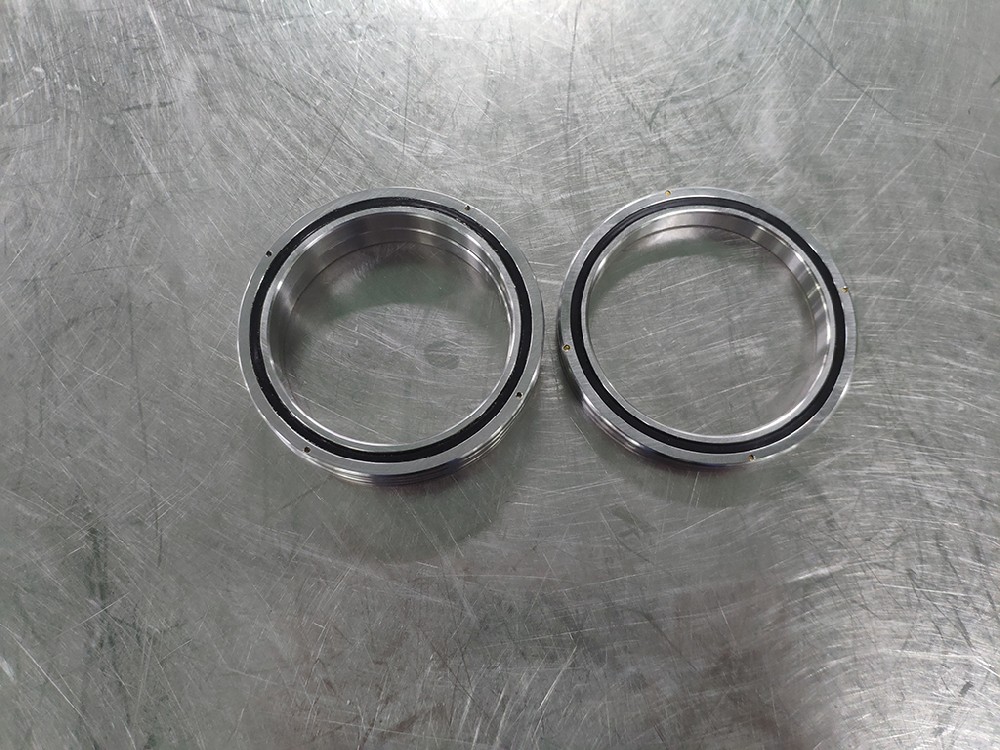The bearing limit speed refers to the maximum allowable speed of the bearing, which decreases as the bearing diameter series and width series increase. The speed of each rolling bearing has a certain limit. When the bearing rotates, as the rotation speed increases, the temperature rise caused by the friction heat inside the bearing will also increase. The speed limit is the empirical speed allowable value for sustainable operation without causing sticking or overheating. Therefore, the limit speed (rpm) of various bearings varies depending on the bearing structure, size, cage structure, material, bearing load, lubrication method, including cooling conditions around the bearing.
Lubrication method
Bearings lubricated by oil gas or oil mist can continuously supply a small amount of new lubricating oil to the bearing, effectively ensuring the thickness of the bearing lubricating oil film. Moreover, due to the large amount of oil supply, the jet lubrication method can quickly take away the heat generated by the bearing operation and increase the bearing's limit speed.
Bearing load
The limiting speed of a rolling bearing is the maximum speed reached under a certain load and lubrication conditions, which depends on the bearing type, size, direction, lubrication method, clearance, cage structure, cooling conditions, load (size, type, direction), etc. Very relevant. Improving bearing accuracy and appropriately adjusting bearing clearance can increase the limit speed of deep groove ball bearings.
The limiting speed of a rolling bearing is the maximum speed reached under a certain load and lubrication conditions, which depends on the bearing type, size, direction, lubrication method, clearance, cage structure, cooling conditions, load (size, type, direction), etc. Very relevant. Improving bearing accuracy and properly adjusting bearing clearance can increase the limit speed of deep groove ball bearings.
Preload
If the preload force is too high when the bearing is installed, the contact stress between the rolling elements and the raceway surface will increase when the bearing is running, and the heat generation will also increase, which will further increase the preload force inside the bearing, making the bearing easier to install. Produces wear and reduces the bearing limit.
Drive mode
The limit speed of the bearing will change with the spindle drive method. For example, when an electric spindle is used to drive the spindle, the internal heat of the spindle is relatively large. If an outer cylinder is used for cooling at the same time, the temperature difference between the inner and outer rings of the bearing will become larger, increasing the bearing's wear resistance. Internal load causes the limit speed to decrease; when using outer cylinder cooling, due to the different tolerances of the bearing seat, the thermal expansion of the bearing and the bearing seat are different, the outer ring fit changes from a clearance fit to an interference fit, and the internal preload force increases. The limit speed changes.
Bearing load
When the clearance after installation of the bearing is a small negative value, the rated life is the longest, and the load-bearing capacity and limit speed are also the highest at this time. However, the actual clearance must also subtract the interference caused by the fit and the deformation caused by the temperature difference. , this tiny negative clearance is difficult to control, and once the clearance becomes too negative, the rated life will be significantly reduced. Therefore, at present, a positive clearance close to 0 is generally selected.
Bearing combination
When the bearings are combined, due to the large amount of oil supply, the heat generated by the bearings can be quickly taken away, and the limit speed can be further increased.


